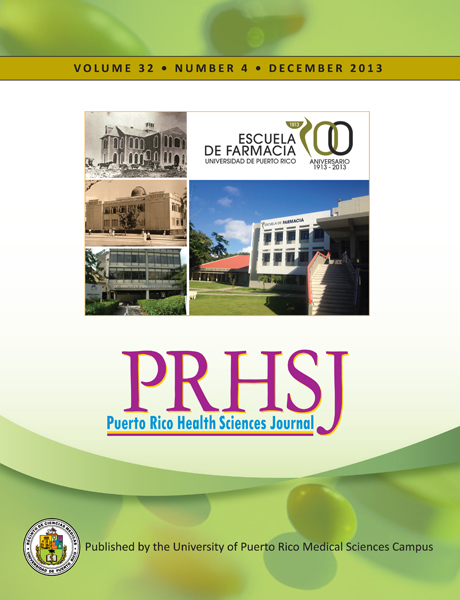Abstract
Objective: Puerto Rico (PR) has undergone rapid changes during the last decades. Some of these involve the health care system and the delivery of care to the critically ill patient. With this in mind, we investigated how the intensive care units throughout our island’s hospitals are organized so that we could establish a profile of the adult intensive care units (ICU) in PR. Methods: From January 1, 2010 through April 30, 2010, questionnaires were distributed by e-mail or fax to every hospital that maintained a critical care unit. The questionnaires asked for such details as the structure of the unit; whether is use on an open or closed model; the number of beds in the unit; the total number of faculty members in the unit; the credentials of the unit’s medical faculty and nursing staff; whether critical care service was available, and the different people in-charge of the unit during the day and at night. Results: A total of 33 questionnaires were distributed, of which 19 were collected and analyzed. Among the IC U directors who responded, the predominant specialty was cardiology. Surprisingly, only 26% of the hospitals had critical care specialists. In most of the institutions, an internist or a primary care physician was on site during the day, this individual directly supervised patients and had decision making authority. At night, however, patients were managed by supervising nurse with limited ability to medically identified patient complications , though primary care physician was always available by phone if a critical decision needed to be made. Some of the units used protocols as part of their medical management armamentarium. Conclusion: Although only a small percentage of the island’s IC Us participated in our project, the study’s findings serve as evidence of the need to re-evaluate the delivery of care to the critically ill population.
Authors who publish with this journal agree to the following terms:
a. Authors retain copyright and grant the journal right of first publication with the work simultaneously licensed under a Creative Commons Attribution License that allows others to share the work with an acknowledgement of the work's authorship and initial publication in this journal.
b. Authors are able to enter into separate, additional contractual arrangements for the non-exclusive distribution of the journal's published version of the work (e.g., post it to an institutional repository or publish it in a book), with an acknowledgement of its initial publication in this journal.
c. Authors are permitted and encouraged to post their work online (e.g., in institutional repositories or on their website) prior to and during the submission process, as it can lead to productive exchanges, as well as earlier and greater citation of published work (See The Effect of Open Access).
